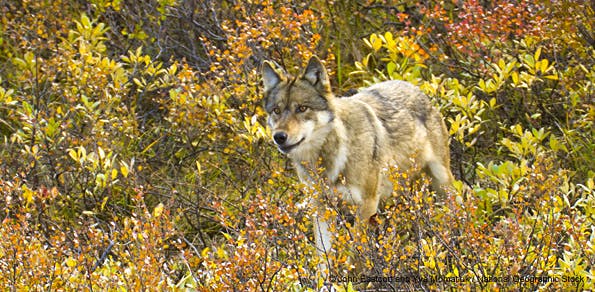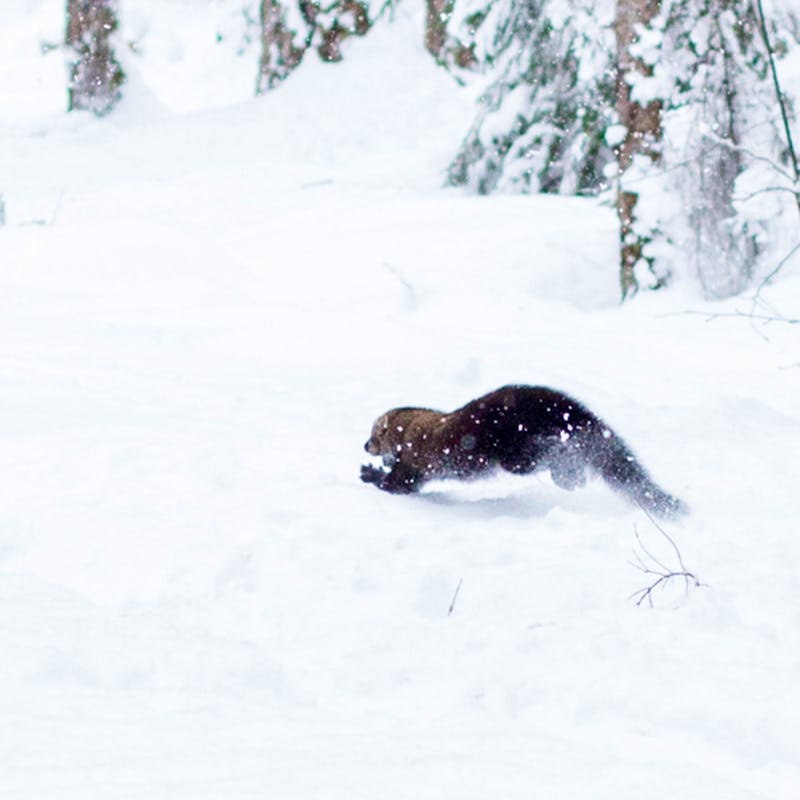Some Good News for Wolves in Idaho… Finally! Yes, you read that correctly. The black cloud over Idaho may be thinning. This week, the City of Ketchum in Blaine County unanimously passed a resolution requesting that state officials use nonlethal tools – guard dogs, strobe lights, electric fencing – instead of lethal tools – aerial gunning, hunting and trapping – to manage wolf and livestock conflicts in Blaine County. This is the first time a town in the West has taken such a strong stand to protect wolves. Blaine County is home to the Wood River Wolf Project, the nation’s largest coexistence operation of its kind using nonlethal tools to protect 25,000 sheep grazing annually on the Sawtooth National Forest. The resolution states that the Wood River Wolf Project, initiated by Defenders of Wildlife, continues to demonstrate that predators and livestock can coexist, and urges the rest of the county to employ the project’s successful coexistence strategies. In response to this great news, Suzanne Stone, Idaho resident and Defenders of Wildlife Senior Northwest Representative said, “Blaine County is leading a cultural change in the way this nation and state manages its wolves and other predators. Nonlethal tools are the future of wildlife management, and we are thrilled to see the City of Ketchum formally embrace these more effective methods for living with wildlife.” The mayor and city council members howled together in unison after they finished passing this resolution, and have received hundreds of emails in support of their action. Give them your vote of support today by participating in this poll on the resolution. (Poll is on the left column of webpage.)
 Muddied Waters for Washington Wolves: A new wolf pack, called the “Profanity Peak Pack” due to the wolves’ proximity to Profanity Peak in Washington’s Kettle River Range, has been confirmed by Washington Department of Fish and Wildlife’s (WDFW) remote regional wildlife cameras. The cameras show that the pack has at least three adults and three pups. Unfortunately, this new pack is already being blamed for cattle killed on a nearby grazing pasture. Right now there are a lot of questions and not many solid facts. So far the full investigation report has not been shared with the public. This week, the cattle are being moved to a new location and WDFW staff are reviewing the issue and also completing a current checklist of what preventive non-lethal control measures, if any, were used to prevent livestock-wolf conflict up to this point. We’re concerned that WDFW will repeat the Wedge pack fiasco and kill the entire pack to appease local ranchers. If you live in Washington, please take just a moment to call or email Director Phil Anderson. Tell him that you support wolves in Washington and that WDFW should not use lethal control methods on the Profanity Peak pack!
Muddied Waters for Washington Wolves: A new wolf pack, called the “Profanity Peak Pack” due to the wolves’ proximity to Profanity Peak in Washington’s Kettle River Range, has been confirmed by Washington Department of Fish and Wildlife’s (WDFW) remote regional wildlife cameras. The cameras show that the pack has at least three adults and three pups. Unfortunately, this new pack is already being blamed for cattle killed on a nearby grazing pasture. Right now there are a lot of questions and not many solid facts. So far the full investigation report has not been shared with the public. This week, the cattle are being moved to a new location and WDFW staff are reviewing the issue and also completing a current checklist of what preventive non-lethal control measures, if any, were used to prevent livestock-wolf conflict up to this point. We’re concerned that WDFW will repeat the Wedge pack fiasco and kill the entire pack to appease local ranchers. If you live in Washington, please take just a moment to call or email Director Phil Anderson. Tell him that you support wolves in Washington and that WDFW should not use lethal control methods on the Profanity Peak pack!
Did You Submit Your Comments? Red Wolves Still in Trouble But We Have Time to Help: Last week we told you that the Service is completing an evaluation of the Red Wolf Recovery Program and could terminate the program based on the results. To add insult to injury, we were originally given fewer than two weeks’ notice about the public meetings and comment period for this hasty and poorly-timed evaluation. Thanks to all who told the Service we needed additional time to respond, the comment period has now been extended. So, if you haven’t already, we need you tell the Service not to give up on these iconic and beautiful wolves of the east!

Comment Period Closing on Harmful Mexican Gray Wolf Rule: The Service is proposing to change the rules about how Mexican gray wolves (often called lobos) are managed in the wild, and we have something to say about it! Although the Service’s proposal does some good by creating new release sites and giving the wolves more room to roam, it ultimately would make recovery impossible by allowing more wolves to be killed and keeping them out of the habitats they need to recover. We need Defenders members to tell the Service how to move forward, and our opportunity to do so is closing quickly; the comment period on the proposal is closing on Tuesday the 23rd. If you haven’t submitted comments already, please do so now! Here are a few suggestions to get you started:
- I do not support the capture and return of lobos dispersing north of Interstate 40. This keeps them out of the habitats in the Grand Canyon ecoregion and southern Colorado which are necessary for recovery. These wolves need additional habitat in order to recover and thrive.
- I do not support expanded opportunities to kill wolves. Including provisions that make it easier to kill these wolves is not the way to recover a critically endangered species.
- The Mexican gray wolf needs a science- based recovery plan, not a long list of management rules uninformed by current science.
Every comment helps because each and every one goes into the public record. And the Service must evaluate all comments as it decides how to manage critically endangered lobos.
Washington’s Lookout Pack Caught in Fire: As wildlife managers conducted research/ monitoring on Washington’s wolves this summer, they found the remnants of a wolf pup that appears to have been the victim of a fire near the Methow Valley. The Lookout pack is well known in Washington because it was the first documented breeding wolf pack to return to Washington since the 1930’s. Today, there are only two confirmed members of the wolf pack, but biologists think the couple may have additional yearlings or pups among them.
From the Blog






Follow Defenders of Wildlife
facebook bluesky twitter instagram youtube tiktok threads linkedin